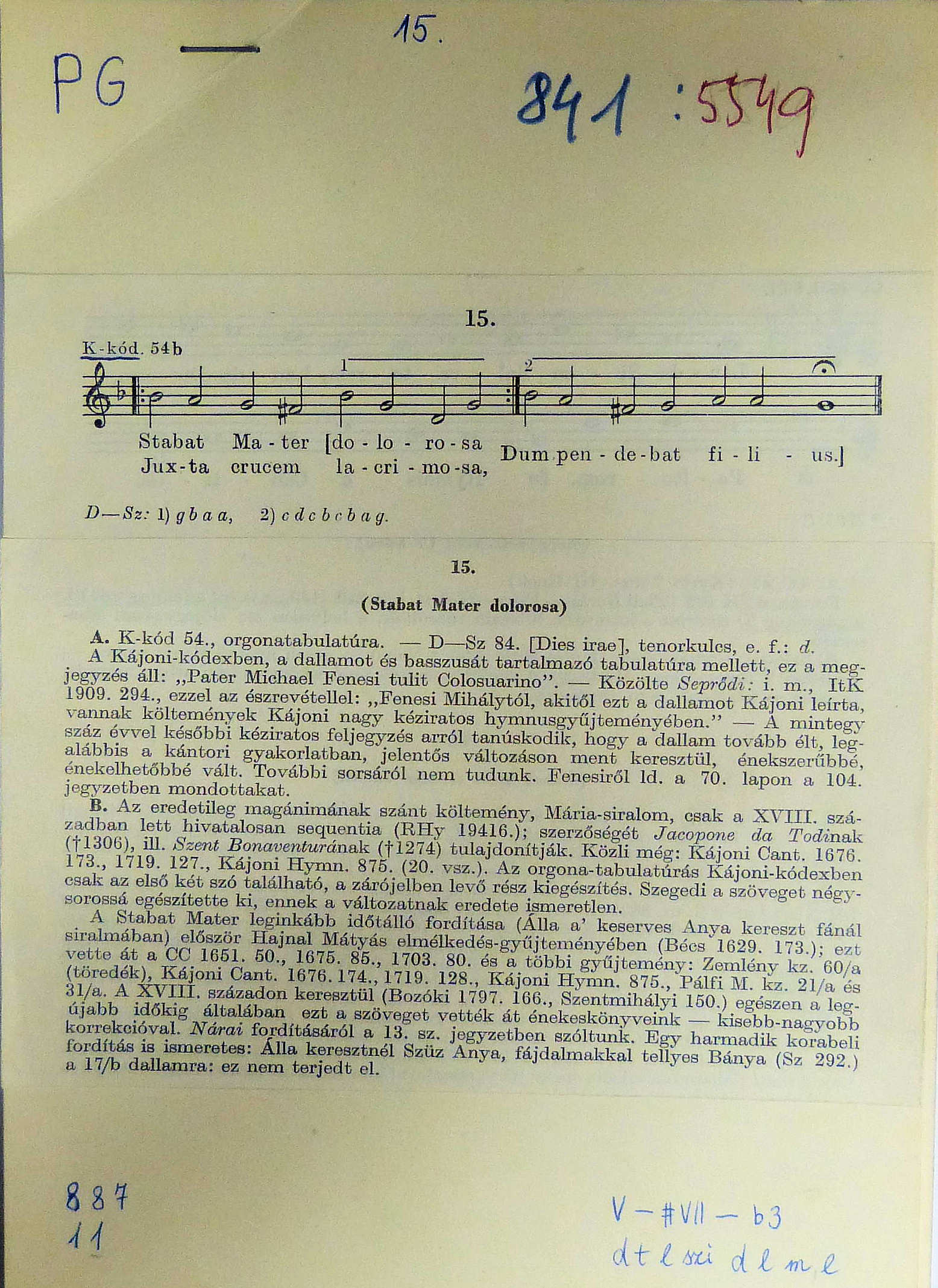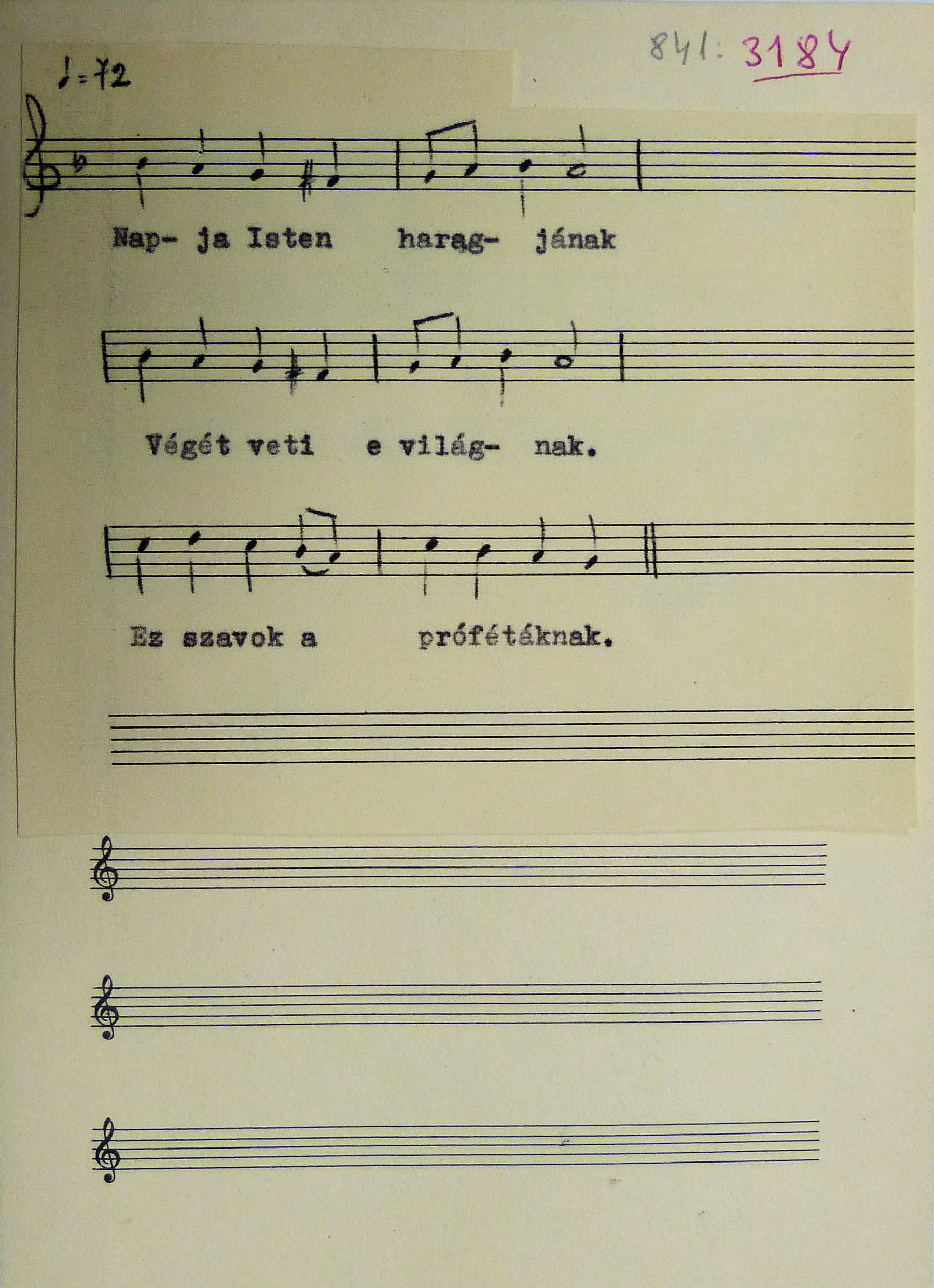Further details
The Historical Hymn Collection was formed in 1964, still under the Folk Music Research Group. The idea behind it was stated first in 1933 by Zoltán Kodály in his study Néprajz és zenetörténet (Folk Song and Music History): living folk music could help researchers swiftly interpret the sporadic written materials for the history of Hungarian music. For Janka Szendrei and László Dobszay in setting up the Collection, the prime aim was to match the folk-music data with historical records and church hymnals of the past. This lay behind collecting and ordering the Hungarian church hymns found in oral practice, in a framework provided by the folk-music archive of the Institute for Musicology.
Compiling the “types” of the Historical Hymn Collection coincided with the development of an overall type system for folk music. The kernel came from copies of folk-music records selected systematically from the overall folk-music system. To this were added data from a nationwide targeted folk-song collection programme. The Collection consists of about 15,000 record cards; half have been sorted into 300 types and half await that.
The Collection led to the so-called “yellow book”, where melodies noted by Szendrei, Dobszay and Rajeczky appear in comparable form in two volumes entitled XVI‒XVII. századi dallamaink a népi emlékezetben (Hungarian Melodies of the 16th‒17th Centuries in Folk Memory). This melodic-history approach can be easily grasped on the books’ pages, where the starting point is always the two-volume Régi Magyar Dallamok Tára (Corpus of Old Hungarian Melodies). However, maintenance and expansion of the Corpus ceased after the books appeared.
The Collection offers the search aids possible in that period: card indexes of text incipits and locations. For transparency’s sake, the archiving and the sorted part of the collection were placed in a computer database in 2010. Among the tasks for the immediate future are categorizing of the unsorted melodies, concurrent expansion of the database and type system, and digitization of the whole musical material. The ideal would be not only to preserve the records themselves, but for them to inspire research into hitherto untouched areas of melodic history.








